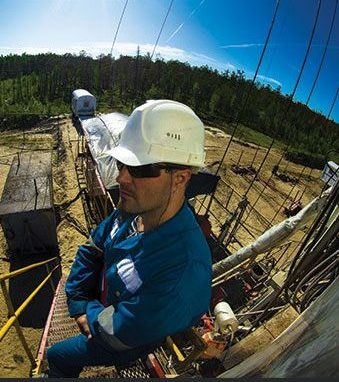Will high prices at the pump lead to increased U.S. oil and gas production?
March 22, 2022
 Maybe. Or, to borrow from some people’s relationship status on Facebook, it’s complicated.
Maybe. Or, to borrow from some people’s relationship status on Facebook, it’s complicated.
Ramping up domestic production can take weeks and months, and that’s assuming companies can secure the materials and labor they need for production. It doesn’t help that volatility in the wholesale commodities market for the price of oil makes production decisions fraught. Several external and market factors are contributing to wholesale price volatility. Despite those pressures and the ones we detail below, companies are taking measured steps toward increasing U.S. oil and gas production.
In early February, the Energy Information Administration (EIA) issued its 2023 production forecast which included a modest increase in output from previous forecasts. The updated 2023 forecast of 12.6 million barrels per day boosts anticipated production to levels that surpass the previous peak production of 12.3 million barrels per day set in 2019.
Whether or not that historic level of production is met is subject to a multitude of market forces. Here are a few of the short and long-term factors that are affecting the supply-side of global and domestic production:
The war in Ukraine
- Russian oil exports have decreased due to pressure to avoid economic activity with them following their invasion of Ukraine.
- Multi-national producers, including Exxon and BP, are making tough decisions about exiting their investments in Russia.
- As the country with the third-highest annual oil production, Russia continues to be a major energy supplier to Europe. Countries that want to find an alternative supplier will face challenges with infrastructure and supply in the short term.
OPEC production
- At the beginning of the COVID-19 pandemic, OPEC production dropped sharply and still lags average production between 2015-2019. The U.S. Energy Information Administration forecasts that production will modestly increase over the course of the year.
- Oil price volatility in the commodity markets does not provide meaningful incentives for long-term investments in additional supply.
Sand shortages
- Frac sand is a critical supply for the U.S. production of oil and natural gas and there simply isn’t enough of it being mined right now. Until sand mines are fully operational, oil and gas extraction will lag.
- Even if mining resumes, transporting the sand from the mines to oil and gas production sites poses another barrier. It is costly and can be labor-intensive.
Labor
- The U.S. is experiencing a tight labor market, across many industries. Frac sand mining, oil field services, and transportation are all responding to labor shortages.
- Many industry workers lost their jobs at the beginning of the COVID-19 pandemic and companies have been slow to hire back, meaning that many previous employees have likely found new and different types of work.
- Despite a reputation as jobs that bring in lucrative paychecks; uncertainty, remote work locations with limited housing, and perception of dirty or even dangerous working conditions may be harder for employers to overcome in the current labor market.
- Shortage of skilled labor?
The four factors above are all supply-side considerations to keep in mind when making predictions about changes in oil and gas production. The U.S. consumer – the demand side of the equation – also merits consideration.
Unpredictable domestic demand
- At the beginning of the COVID-19 pandemic in the U.S., demand for oil and gas dropped as people stayed home. It still hasn’t returned to pre-pandemic levels. (EIA)
- The degree to which domestic demand for gas is inelastic (or insensitive to changes in price) is limited; especially in a changing labor market where work-from-home and hybrid work arrangements are more common for some types of roles.
Even with all of this uncertainty, the active rig count is starting to climb for both oil and gas, and executives at CERA Week (March 7-11) were starting to talk about re-evaluating long-term investment plans. If trends in industry production and investment activity change, we’ll be here to help you navigate them.
Scale Funding
Since 1994, Scale Funding is known as a leader in factoring for oilfield services companies. Our factoring programs are customized to fit the unique needs of each company.
We offer the following complimentary services so you can focus on growing your business.
- Factoring Lines from $50K to $20MM
- Month-to-Month Factoring Agreements
- Same-day Funding on Invoices
- Online Reporting
- Oil Industry Expertise
Start growing your oilfield service company today! Get a quote in 15 minutes or less.


